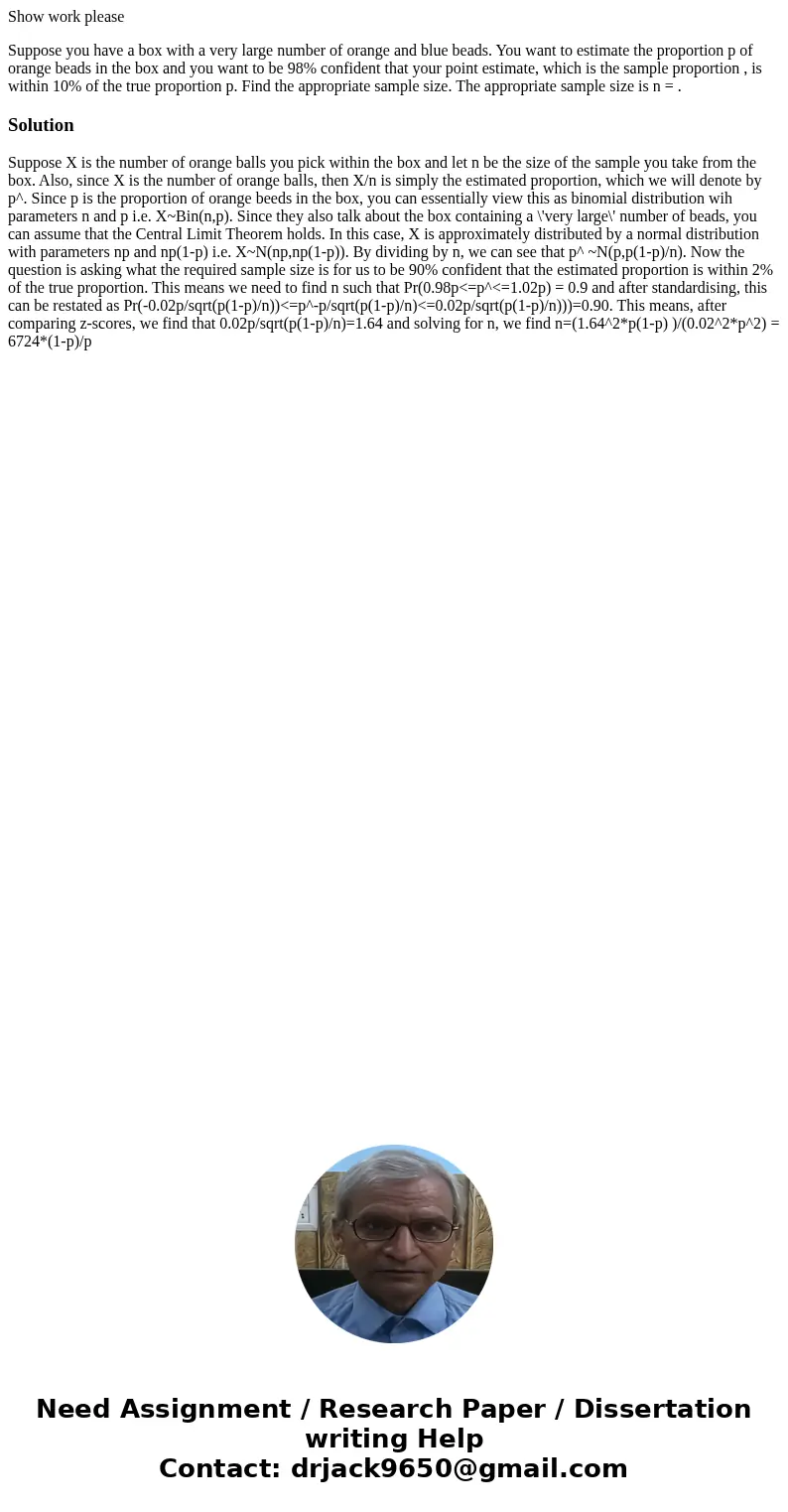Show work please Suppose you have a box with a very large nu
Show work please
Suppose you have a box with a very large number of orange and blue beads. You want to estimate the proportion p of orange beads in the box and you want to be 98% confident that your point estimate, which is the sample proportion , is within 10% of the true proportion p. Find the appropriate sample size. The appropriate sample size is n = .Solution
Suppose X is the number of orange balls you pick within the box and let n be the size of the sample you take from the box. Also, since X is the number of orange balls, then X/n is simply the estimated proportion, which we will denote by p^. Since p is the proportion of orange beeds in the box, you can essentially view this as binomial distribution wih parameters n and p i.e. X~Bin(n,p). Since they also talk about the box containing a \'very large\' number of beads, you can assume that the Central Limit Theorem holds. In this case, X is approximately distributed by a normal distribution with parameters np and np(1-p) i.e. X~N(np,np(1-p)). By dividing by n, we can see that p^ ~N(p,p(1-p)/n). Now the question is asking what the required sample size is for us to be 90% confident that the estimated proportion is within 2% of the true proportion. This means we need to find n such that Pr(0.98p<=p^<=1.02p) = 0.9 and after standardising, this can be restated as Pr(-0.02p/sqrt(p(1-p)/n))<=p^-p/sqrt(p(1-p)/n)<=0.02p/sqrt(p(1-p)/n)))=0.90. This means, after comparing z-scores, we find that 0.02p/sqrt(p(1-p)/n)=1.64 and solving for n, we find n=(1.64^2*p(1-p) )/(0.02^2*p^2) = 6724*(1-p)/p
 Homework Sourse
Homework Sourse